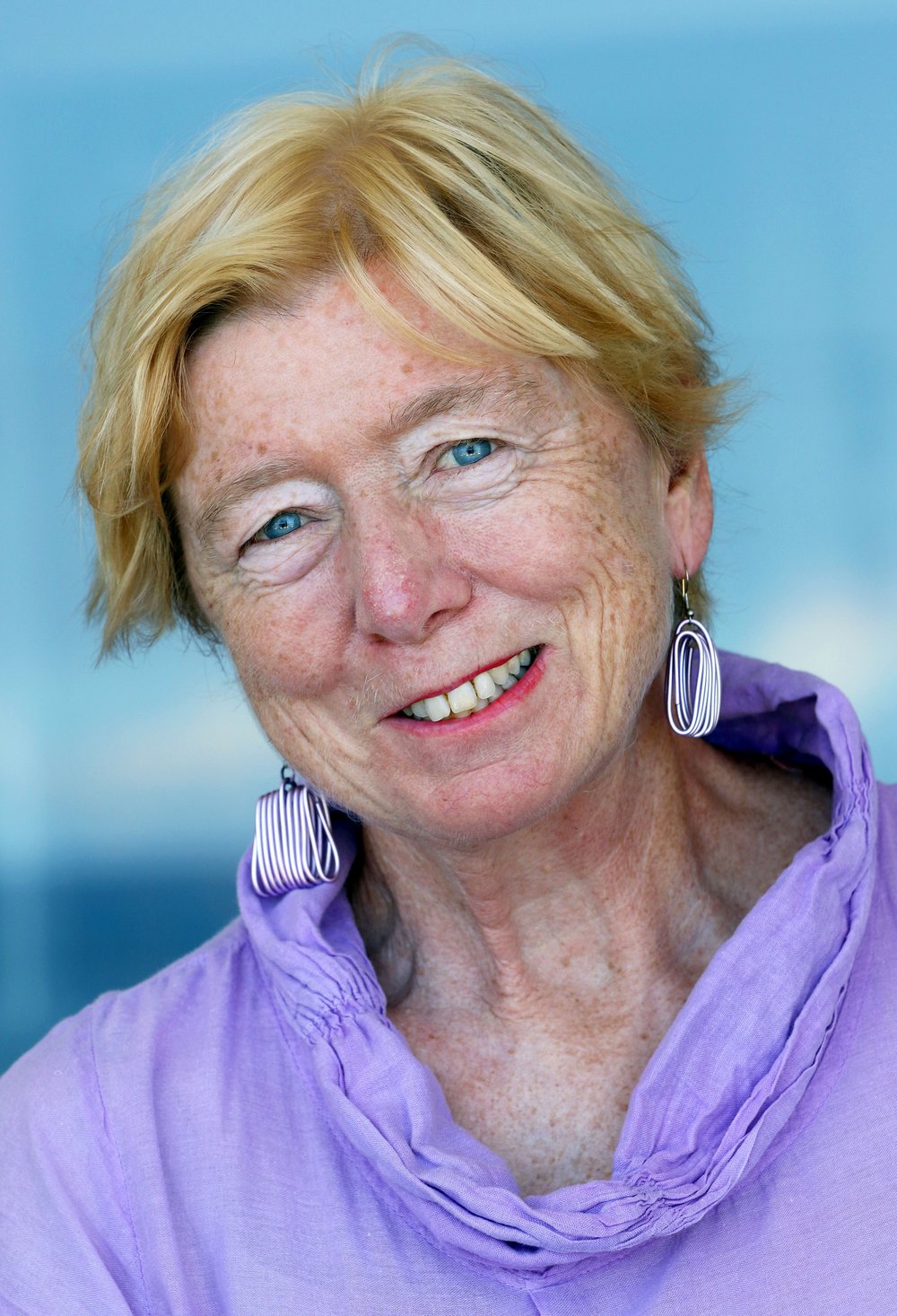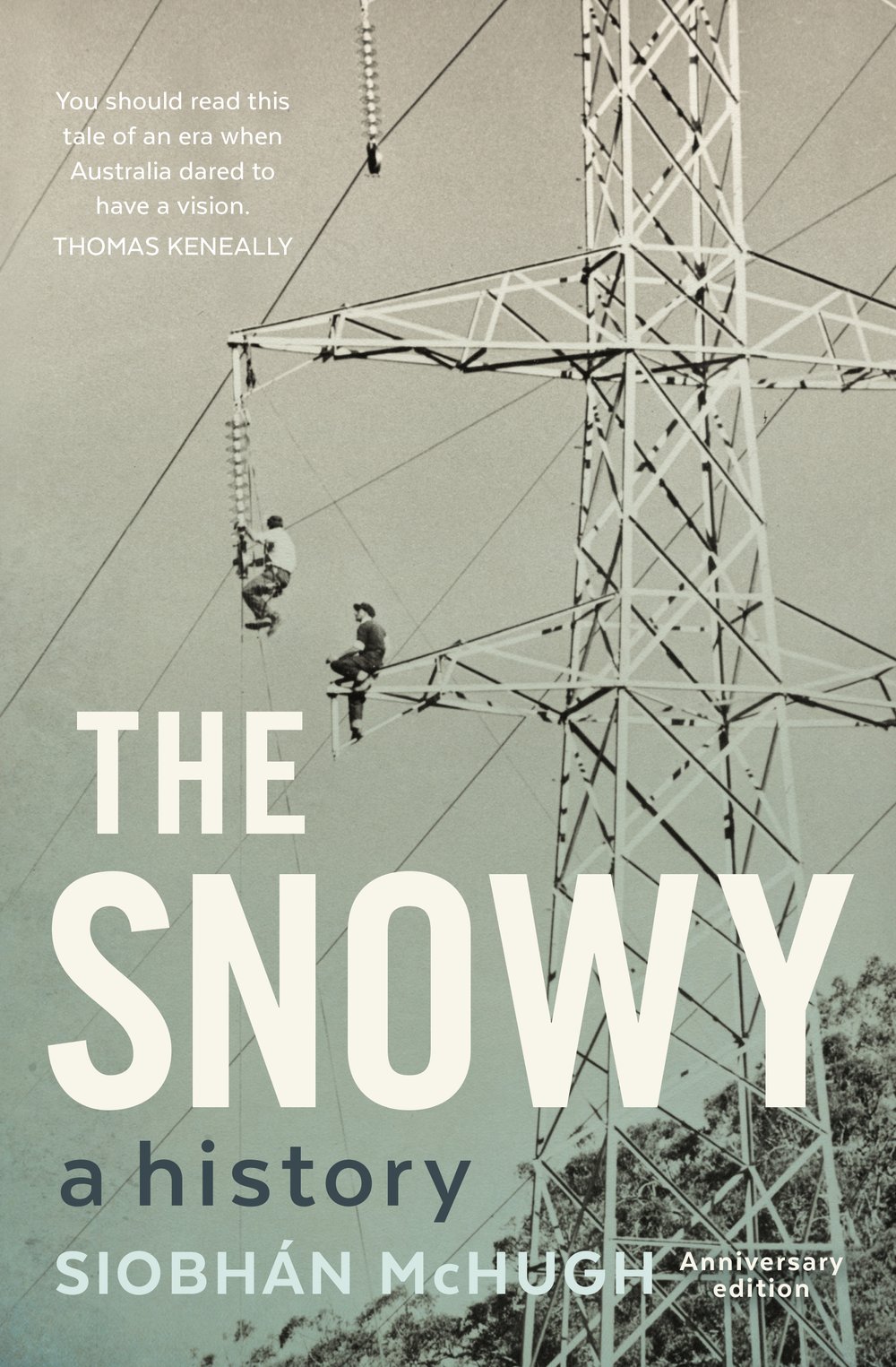Why would anyone become so all-consumed that they’d work on a book non-stop till they were down to their last $20? That’s what happened to me writing The Snowy: A History. I turned thirty as I started tracking down migrants from some forty European countries who had worked on the Snowy Mountains Hydro-Electric Scheme. Their stories wove an astonishing web: I listened raptly as they described the ravages of WWII and how determination or destiny helped them escape the aftermath; how they grappled with the strangeness of a parochial Australia of only eight million people, most of them of British or Irish origin; how they accepted as fair that they should be deployed by the government to work in any capacity for their first two years here, their price of admission as refugees; or how as economic migrants, they flocked to the big money you could make tunnelling the hard rock – if you didn’t die in the attempt, as 53 would.
I spent weeks holed up in the Royal Hotel in Cooma, epicentre of the scheme, delving into the archives on the scheme’s construction by day, talking to locals in the front bar in the evening, getting more and more names: the man who knew where the bodies were buried, literally – he’d shifted the Jindabyne graveyard ahead of the old town’s inundation by the dam; the woman who’d begged the removalist to take the concrete floor of her old laundry when they shifted her house: her husband, now dead, had concreted her tresses into it as a mark of their love; the White Russian doctor, a forthright woman who spoke several languages, drove a jeep, rode a horse, and handled everything from multiple mining fatalities to childbirth in the remote construction townships; the Maltese diamond driller who lugged his heavy gear into pristine wilderness for over 20 years to extract geological cores, living in a tent, washing in the creek and cooking a steak on a shovel over a campfire, if he was lucky; the Chifley minister who played fast and loose with the constitution to get the Snowy legislation through cabinet, motivated by the greater good.
These human stories behind the massive turbines and tunnels and dams fascinated me. The work itself was monumental, an engineering project on a scale the world had not yet seen. But the workforce! Two-thirds comprised of people who had just landed in Australia – and who had been fighting each other only a few years before. A recipe for disaster, surely, especially when you considered the isolation and danger of the Australian Alps, which received more snow than their Swiss counterparts, the lack of women and family support, and the lack of awareness among locals of European traditions and culture.
Yet somehow, this unplanned action research project in multiculturalism was a resounding success. Yes, there were growing pains. When the first group of German plant operators were billeted in Jindabyne in 1951, Polish and other workers harassed them at night by throwing stones at the roof and firing shotguns: a small enough protest, given that over 20% of the Polish population died in the war. By the end of the decade, Germans, Aussies, Poles, Italians and Eastern Europeans of all kinds would celebrate Anzac Day together out in the construction camps. One Australian foreman, Johnny Abbottsmith, remembers the first time it happened: ‘Eventually, after a few beers, we were sitting around saying “here was I one side of Tobruk and you was on the other and we were fighting and here we are now, sitting together, laughing and joking!” The world didn’t make any sense, this war business.’ The Serbs and Croats would maintain hostilities (their centuries-old conflict is particularly fraught), but the other nationalities would set aside their differences and become, first, ‘Snowy People’, as the project Commissioner Bill Hudson dubbed them, then New Australians, and finally, by the time the project ended in 1974, Australians.
Seeking to understand that transformation drove me on, as I pieced together stories of mateship, endurance, tribulations and tragedy. I fought to get access to the inquests on the 121 men who died in construction, and just reading those files was a gruelling experience. A twenty-year-old Greek, for instance, on only his second day in the tunnel, died of head injuries from a routine explosion. Unaware of the danger, he had jumped down from the train taking him to safety and been too close to the tunnel face. He was seemingly trying to get an early start on his lunch break. Chillingly, the inquest revealed the supervisor had seen men on the track but had given the order to detonate nonetheless; as I would discover, miners’ wages were directly linked to the speed of the work, which meant risks were taken. Some accidents were harder to avoid. A man was trapped in liquid concrete after a scaffolding collapse, his rescuers acutely aware they had only two hours before it set. He died horribly at the scene.
There were good times too, of course. Romance blossomed between local girls and the exotic newcomers: not to everyone’s approval. One father, finding his daughter enamoured of a smartly turned-out European, wailed, ‘how could you possibly marry a man who wears suede shoes?’ Workers earning many times the average wage saved enough in a couple of years to buy a house, while others brought out family from Europe. The Snowy gave tens of thousands a new start. And so I felt compelled to complete this book, to the exclusion of all other activity and the running down of my finances.
One fateful day, I went to the bank to withdraw my last twenty bucks – a friend was visiting from Ireland and I would treat her to a stand-by from my impoverished student days: a tin of tuna with cream and mushrooms, served with pasta. When I got home, a letter awaited. It was from the Australia Council: ‘Congratulations’, it said, ‘you have been awarded a Literary Fellowship of $20,000 to write a history of the Snowy Mountains Scheme.’ My screams of elation must have echoed across Balmain.
The grant enabled me to do justice to the stories of the men and women who pioneered the Snowy. And now, this new, updated and expanded edition has given me the chance to reflect on that process, and muse on fresh insights I have gained in the three decades since, into what we do when we record and interpret oral history, into the complex inter-subjective dialogues at its core, and into how my own naivete, passion and curiosity, along with a raging urge to faithfully represent the life experiences entrusted to me, helped deliver this book.
This edition also allows me to ponder the longer-term and mostly unforeseen effects of the Snowy Scheme on the environment: the importance of maintaining healthy river flows brought home horribly by the massive Menindee fish kills in the Darling. I also examine administrative changes and political sensitivities around the Snowy Scheme, including the greenlighting of Snowy 2.0. But for me, the Snowy will always be about the birth of multiculturalism in Australia – and in an age when right-wing ranters increasingly try to turn people against newcomers and sow dissent by demonising difference, I am proud to have this chance to show, through this book, that migrants can be the making of a nation. The Snowy was our coming of age and it happened because of, not in spite of, cultural diversity. We are much richer for it.
Siobhán McHugh's book The Snowy: A History will be published by NewSouth in May 2019.

